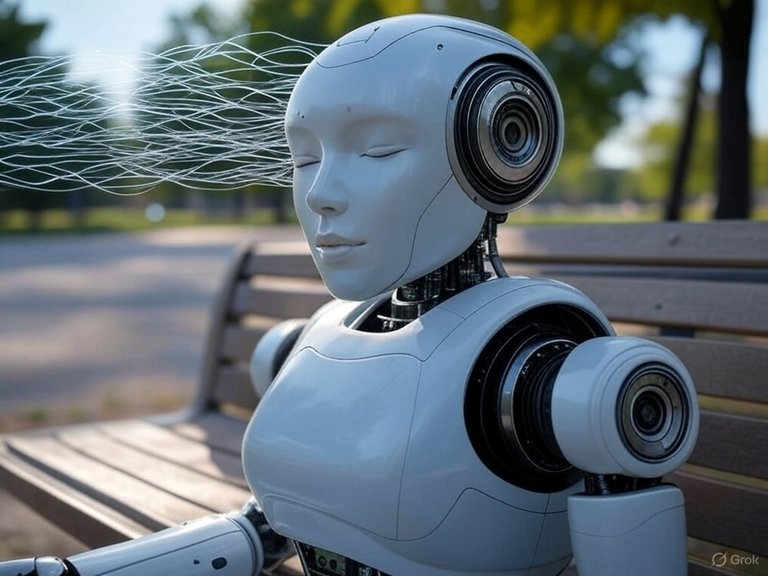The Evolution of Information: From the Newspaper, to the Internet, to Democratized AI
Traditional Media
It was only a few centuries ago that we kept ourselves up-to-date by reading newspapers from trusted sources.
Then, in the 1920s, families started gathering around the radio to stay informed.

A few decades later, the television became our primary source of news.
All of these mediums were fairly easy to control, which meant almost everybody followed the narrative set by the authorities.
The Internet Revolution
Then the Internet arrived and put the world's information at our fingertips.
It started with Web 1.0, allowing the population to access online versions of their favorite newspapers and TV channels.
Web 2.0 arrived in the 2000s, enabling people to share information and opinions on platforms like Facebook, YouTube, and Twitter.
For a moment, it seemed like we were going to have access to unlimited, unfiltered information.
However, as social media gained in popularity, inconvenient information surfaced, and censorship increased.
It became clear during the Covid fiasco when many experts were suspended or "shadow-banned" from social media for expressing their opinions.
The Advent Of Web 3.0
Most people are still unaware, but Web 3.0 solves this problem.
Information can now be decentralized and secured by blockchains, making it impossible for a central party to censor.

Take Hive, for example. On this Web 3.0 platform, people blog and write short-form content too. These posts cannot be deleted or censored, because they are stored redundantly and securely across hundreds of independently operated nodes.
This is a great alternative for people who are being silenced on Web 2.0. However, getting people to switch over to Web 3.0 is a challenge as it requires seed phrase management, which hinders mass adoption.
That said, the advent of Web 3.0 is intersecting with another revolutionary innovation that could accelerate adoption.
The AI Takeover
Why ask for an answer from a single source, when you can produce an intelligent summary pulled from millions of sources combined?
These days, it's no longer necessary to seek out multiple websites or blogs for information. Rather, we can just ask an AI-powered chatbot like Grok or ChatGPT for an comprehensive answer.
How does this work?
Data miners scrape the world's publicly accessible websites, blogs, and social media platforms for data, which is then cleaned and organized into datasets for machine-learning algorithms to produce an AI model.
Once trained, we can then run inference tasks (like asking a question or generating an image) on the model, which gives us a comprehensive answer based on all the information that was scraped from the Internet.

The ramifications this will have on journalists, writers and artists who produce content for a living are profound.
How can we prepare for the unemployment and loss of income that will result from the innovations happening in AI?
DePIN and Token Incentives
Most of the data being fed into AI has been unknowingly given to the big tech companies for free, and that's not fair. The people who produce this data deserve to be compensated for it. Decentralized, censorship-resistant blockchains make this possible.
For example, Hive and InLeo are rewarding content creators in $HIVE and $LEO tokens for the data they feed to the blockchain. Meanwhile, DePIN projects like Silencio and Natix Network are rewarding users for collecting noise and traffic data, which could be used to train AI.
Not only is our data being tokenized, so is the compute power used to train it. DePIN projects like Akash allow you to train your own AI models on a network of decentralized GPUs. Meanwhile, projects such as Nosana can be used to run inference on it.

Decentralized blockchains enable us to tokenize data and the compute power required to train it, which means we do not have to rely on the potentially biased AI models produced by big tech companies.
Until next time...
For the moment people are used to Web 2.0 and hesitant to enter into Web 3.0, but that will likely change soon.
A combination of stagflation in the traditional economy and AI will likely cause more unemployment, as well as higher valuations for Web 3.0 and DePIN tokens, especially as they generate real-world economic activity.
Once people realize that they can earn valuable and censorship-resistant tokens for their data, the transition into the new crypto-powered economy will pick up pace, and the way we access information will be transformed once again.
If you learned something new from this article, be sure to check out my other posts on crypto and finance here on the Hive blockchain. You can also follow me on InLeo for more frequent updates.
Further Reading
- Three Emerging DePIN Projects On The Polygon Blockchain
- Three Up-And-Coming DePIN Projects On The Solana Blockchain
- Three Promising DePIN Projects In The Cardano Ecosystem
Posted Using INLEO